From Bush to Obama…
From Bush to Obama…
By Sergio Rodríguez Gelfenstein
Note: Three weeks ago, I began publishing this article, which, due to its length, will be published in three installments. However, the death of Pope Francis and the commemorations of the 50th anniversary of the United States’ defeat in Vietnam and the 80th anniversary of the Soviet Union’s victory in the Great Patriotic War interrupted the series. I now resume it with this text.
The ever-present “Heartland Theory” enunciated at the beginning of the 20th century by the British geographer Halford MacKinder established that the power that controlled Central Asia would dominate the world. This hypothesis was intertwined with the idea of Zbigniew Brzenziski, who – despite being associated with the Democratic Party and therefore despised in the power circles of the Republican government – assumed the postulate that referred to the need to expand the presence of the United States to the east until reaching the borders with China.
These are some of the reasons for the Bush administration’s anti-China efforts that led Condoleezza Rice to become Secretary of State, driven by the need to unite energy and will in the supreme objective of building a coalition against Beijing that would include India, Japan, Australia, and the Republic of Korea. Of course, all this was accompanied by increasing arms production, an increase in the Pentagon’s budget, and the expansion of security and intelligence agencies. In reality, one could say that this is the true background to the matter. Finally, and no less importantly, turning China into the main enemy was big business for the US Military-Industrial Complex.
The emphasis was placed on the development of the Navy, the most important offensive component of the United States armed forces, considering that the offensive is its primary type of combat. The development of task forces around aircraft carriers was at the heart of the work of theorists and senior military commanders.
In military terms, this meant the integration of the network of US military and naval bases in Japan, Korea, the Philippines, the Pacific, and Australia, all with the goal of “encircling” China. Rice made a major effort to incorporate India into this conglomerate given that the country was vetoed by the US Congress for its refusal to sign the Nuclear Non-Proliferation Treaty. To achieve this goal, President Bush himself worked to resolve the difficulties by proposing and achieving with India a US-backed nuclear weapons development program that would circumvent the parliamentary impediment.
Thus, the United States began to build a terrestrial and naval web around China on its eastern, western, and southern borders, considering that its northern border began to be “protected” by the growing relationship with Russia that reached a climax with the creation of the Shanghai Cooperation Organization in June 2001 (before the terrorist attacks of September 11) and that meant a new alert for the United States as the century that began predicted new geopolitical variants that were moving away from Washington’s control.
At first, the dispute over China’s neighboring territories did not seem to worry its neighbors, who believed it was possible to maintain a dual relationship: political, diplomatic, and military with the United States, and economic with China, whose plans, initiated in 1978 under the banner of reform and opening, were beginning to bear fruit, manifested in its progressive economic, commercial, and technological development, and a growing financial and trade capacity that could no longer be ignored by any country in the region or the world. In this regard, the United States understood that it would have to face a new challenge in terms of scientific and technological competition, which it had so far dominated without setbacks. And it understood that the only option was to do so with the two instruments of power it continued to maintain with absolute superiority: the military and the cultural-communications-media.
Beijing sensed what was happening and wanted to send a message of reassurance to the United States and the world. Through Zheng Bijian, one of the most prominent intellectuals, who had served as an advisor to the State Council and the highest Chinese authorities and who had been vice president of the Communist Party School when the then-leader Hu Jintao was its highest authority, he expressed the Chinese government’s concern regarding the escalation of the brewing conflict. In an article published in Foreign Affairs, Zheng argued that China intended to forge its development through means other than those known.
Zheng’s proposal was based on the search for a new international order based on “gradual reforms and the democratization of international relations” beginning with a peaceful rise based on four strategies: first, achieving national significance on the basis of high-tech industrialization, high economic efficiency, low resource consumption, reduced pollution and full utilization of human resources.
In the background, the Chinese researcher argued that: “China will not follow the path of Germany, which led it to the First World War, nor that of Germany and Japan, which led to the Second World War, when these countries were engaged in plundering resources and fighting for hegemony. Nor will China follow the path of the great powers that competed for global dominance during the Cold War.
Third, the proposal stated that China would overcome its outdated administrative methods to achieve a better balance between all levels of society and make its development more sustainable and fluid. Finally, it asserted that China’s global action would not be based on zero-sum games, but rather on win-win strategies, so that everyone would benefit.
Zheng’s article was countered by Robert Zoellick, who at the time was Under Secretary of State for Economic and Agricultural Affairs and had been the United States Trade Representative, where he had spearheaded negotiations to bring China into the World Trade Organization. In an appearance before the National Committee on U.S.-China Relations, a New York-based nonprofit organization that promotes rapprochement between the two countries, Zoellick gave a speech that seemed to lower the tensions manufactured by the Rice-Rumsfeld duo. This made it clear that within the United States government there were two forces that, if not antagonistically opposed, at least openly expressed different views on how to handle relations with China.
In this context, what was perceived from the outside was an obsessive attitude of the United States toward China, which foreshadowed a new era of bipolarization, as long as China accepted the challenge of addressing a conflict in which Washington believed Beijing was solely responsible. In a clear provocation, far removed from diplomatic practice, a few days before his trip to China in November 2005, during a stay in Japan, President Bush called for the democratization of China, holding up Taiwan as an example of a free society. The Chinese government remained unmoved and welcomed Bush’s visit, but when he—now in China—repeated his tirade praising Western democracy, President Hu Jintao declared: “In the future, we will continue to take into account China’s national conditions, follow the wishes of the Chinese people, and develop democratic policies with Chinese characteristics, constantly raising the level of human rights for the population. “
The climax of this escalation of conflict came during President Hu’s visit to Washington in April 2006. White House protocol unceremoniously accepted the presence at the press conference of a journalist from the Falun Gong sect, a long-standing practice of dissent against the Chinese government. On this occasion, the reporter rebuked the Chinese president in Bush’s presence. At the same event, it was announced that the anthem of the Republic of China (Taiwan’s self-name) would be played instead of that of the People’s Republic of China. Bush himself publicly behaved in an unfriendly and unfriendly manner toward his Chinese counterpart. The differences were taking a turn for the worse in terms of the conflict.
This situation didn’t change much in the final years of the Bush administration. In 2008, in addition to the electoral victory that brought Barack Obama to the presidency, the financial crisis erupted in the United States and Europe. The new administration was forced to confront the enormous problem posed by the collapse of the markets and the bankruptcy of the banking sector. Although China didn’t emerge unscathed from the crisis, its economy proved to be much better structured to deal with the situation. In this sense, the crisis was a further “push” for China to continue narrowing the (still enormous) gap between its economy and that of the United States and Europe.
The Obama administration began under a strategy of “engagement,” through which the persistent US grievances regarding the human rights situation in China were relegated to the background, seemingly paving the way for a pursuit of constructive bilateral dialogue. The US president went so far as to assert that ” for the United States, the ‘most important bilateral relationship in the world’ was the one with China,” placing the focus of bilateral policy on security, financial, and trade issues with Beijing. Indian geostrategist Brahma Chellaney noted that at the time, the slogan coined by Assistant Secretary of State James Steinberg regarding China was “strategic reassurance.”
But this “tranquility” began to reverse in 2010, with the launch of a “Strategic Reassurance” policy, under which the United States began to rally allies. Obama made a trip to Asia at the end of that year to visit Japan, South Korea, India, and Indonesia. His new doctrine sought to gather partners who would pressure China to guarantee that its growing power and presence in the region and the world would not develop at the expense of other countries.
Mexican Asia-Pacific expert Víctor López Villafañe noted that this new strategy put an end to decades of US administrations of both parties accepting that China played a relevant role in promoting world peace and an Asian order favorable to Washington’s interests. Likewise, this new policy led to restoring the United States’ leading role in the region by supporting its partners and allies and instilling confidence that they would not be abandoned.
In 2011, the Obama administration implemented a momentous shift in its policy toward China by adopting a new military strategy in the Asia-Pacific region, now known as the Indo-Pacific. It essentially consisted of continuing the decisions of the previous administration by increasing the presence of its armed forces around China but giving greater prominence to Australia and India. The goal was to prepare an attack on what was considered China’s main weakness: its energy shortages. Despite significant investments and agreements by Beijing to secure greater supplies from Russia and Central Asia, it remains deficient in this area, which hampers the implementation of its major economic development projects.
The maritime route remains a priority, and the United States knows this. Obama’s new “Asian Pivot” doctrine aimed to deploy military installations and combat resources to prevent and/or limit China’s maritime energy supply in the event of an escalation of the conflict. This is why the 21st century will be marked by military and, above all, naval conflict in the seas adjacent to China. From the US perspective, the maintenance of Washington’s global strategic hegemony in the world depends on it.
This new approach, considered by the United States to be a strategic shift in its foreign policy to target China as its primary target, stems from the aforementioned MacKinder’s position that Russia first, and then China, would be “pivot powers” that would threaten the global hegemony of the West and the United States. In this way, Washington abandoned the geopolitical vision that had dominated its international affairs for the past 20 years, which emphasized West Asia and North Africa as the epicenters of its foreign policy.
In November 2011, Obama visited Australia. On the 16th, in a joint meeting of both houses of Parliament and in the presence of Prime Minister Julia Eillen Guillard, the US president, delivered a contradictory speech that, while considered the backbone of his new Asia-Pacific policy, cast doubt on the true intent behind those words. After a series of assessments of the region and the world that, viewed nine years later, have shown how erroneous and misguided they were, Obama turned to designing the future structure of the United States’ presence in the region.
The US president said: “Here we look to the future. As the world’s fastest-growing region, and home to more than half of the global economy, the Asia-Pacific is critical to achieving my top priority […] As president, therefore, I made a deliberate and strategic decision: as a Pacific nation, the United States will play a larger, long-term role in shaping this region and its future, upholding core principles and in close partnership with our allies and friends. […] As we consider the future of our military, we have begun a review that will identify our most important strategic interests and guide our defense priorities and spending for the next decade. This is what this region must know. […] I have directed my national security team to make our presence and mission in the Asia-Pacific a top priority.”
And he added: “As a result, reductions in U.S. defense spending will not, I repeat, will not come at the expense of the Asia-Pacific. […] And we will steadily strengthen our capabilities to meet the needs of the 21st century. Our enduring interests in the region demand our enduring presence there. The United States is a Pacific power, and we are here to stay. […] In fact, we are already modernizing America’s defense posture in the Asia-Pacific. It will be more broadly distributed, maintaining our strong presence in Japan and the Korean Peninsula, while enhancing our presence in Southeast Asia […] We see America’s enhanced presence in the alliance we have strengthened: in Japan, which remains a cornerstone of regional security. In Thailand, where we partner for disaster relief. In the Philippines, where we are increasing ship visits and training. And in South Korea, where our commitment to the security of the Republic of Korea will never waver.”
But, in the same speech, seeming to continue the idea, he presented a contradictory perspective on the projection he gave to the relationship with China and his view regarding the immediate future on the matter: “Meanwhile, the United States will continue its efforts to build a cooperative relationship with China. All of our nations, including Australia and the United States, have a deep interest in the emergence of a peaceful and prosperous China. That is why the United States welcomes it. We have seen that China can be a partner in reducing tensions on the Korean Peninsula to prevent proliferation [of nuclear weapons]. And we will seek further opportunities for cooperation with Beijing, including greater communication between our militaries to promote understanding and avoid miscalculations. We will do so, even as we continue to speak frankly to Beijing about the importance of upholding international norms and respecting the universal human rights of the Chinese people.”
In this speech and the one he delivered two days later in Bali, Indonesia, as part of his participation in the Third ASEAN-US Summit, Obama outlined the pillars of his regional policy. Although his rhetoric lacked any animosity toward China, the fact is that from then on, the United States, its military forces, and particularly the Navy, shifted its focus to fuel conflicts in the South China Sea, stemming from China’s border disputes with Vietnam, the Philippines, Brunei, and Malaysia.
With this objective in mind, the creation of the so-called “String of Pearls” around China was proposed, a task initially assigned to the Pentagon to isolate Beijing from accessing this access route for energy imports and production. This area, in addition to its importance as a trade route, possesses extraordinary reserves of oil (potentially as much as 213 billion barrels) and gas (up to 2,000 TCF), (Global Security, 2016) which have been targeted by major oil transnationals such as Chevron and BP, among others.
TO BE CONTINUED…


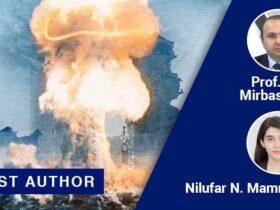

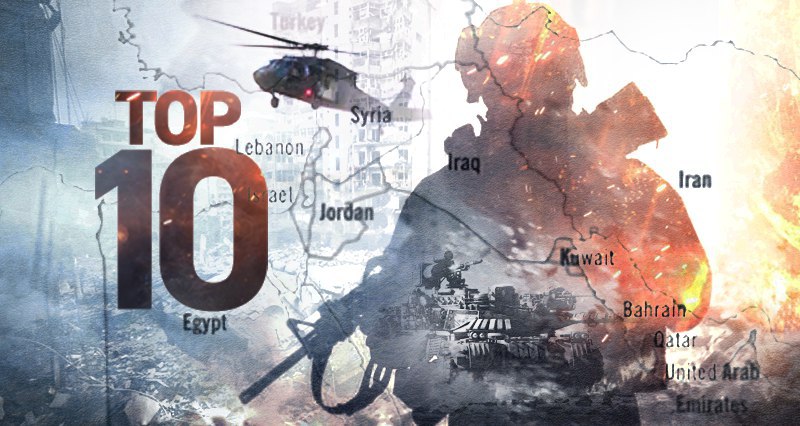


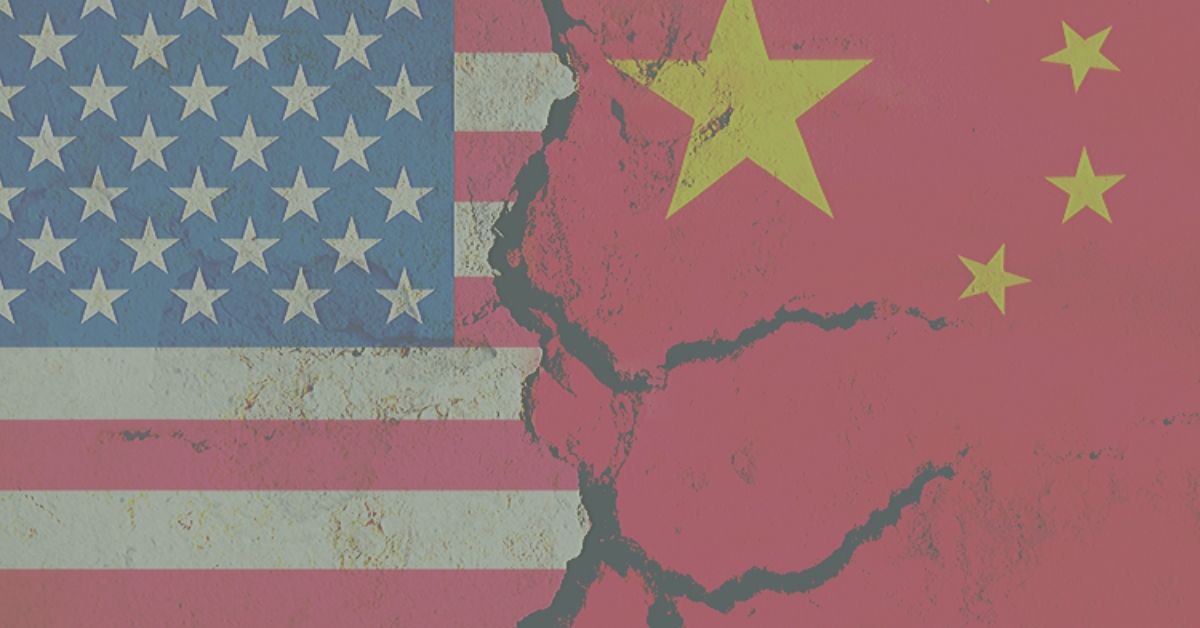

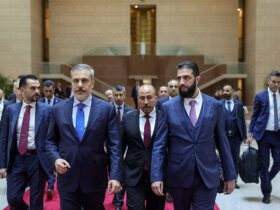
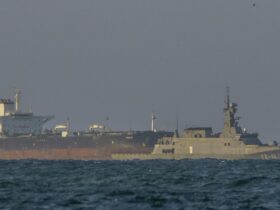
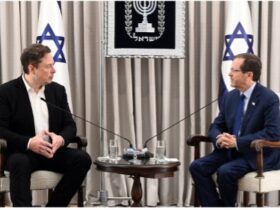
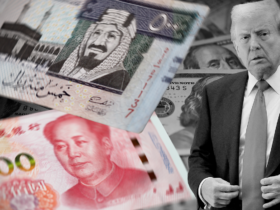
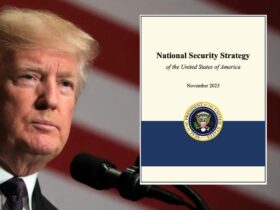
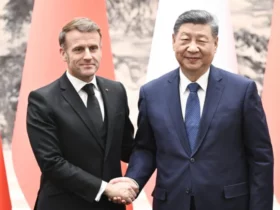

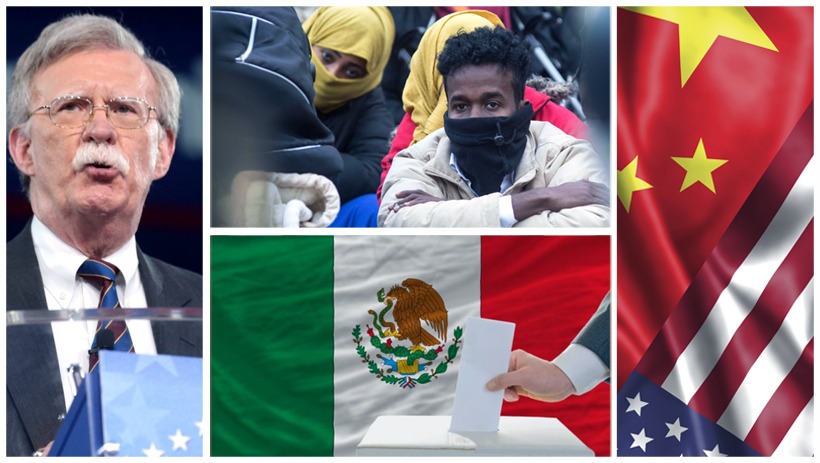
Leave a Reply